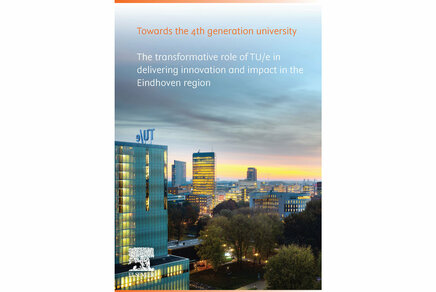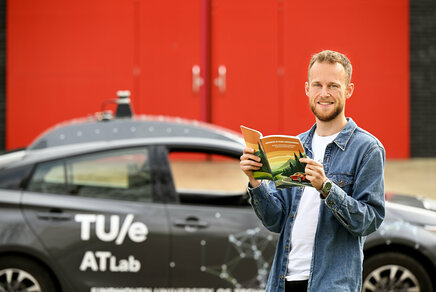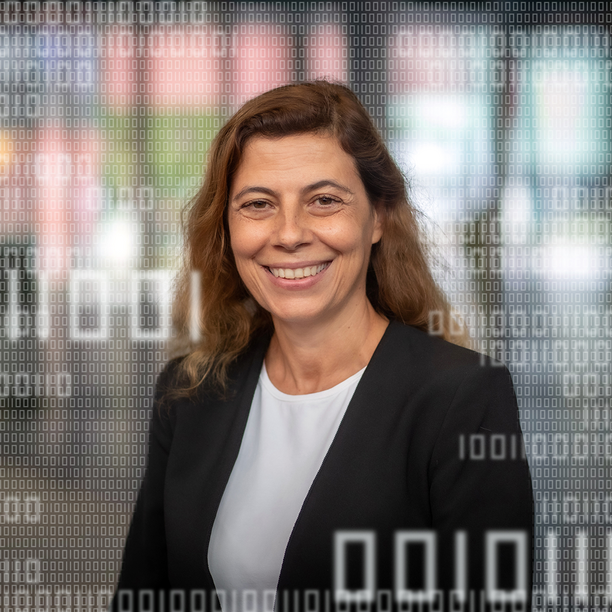Sofia Calero is professor at the department of Applied Physics of the TU/e, where she heads the Materials Simulation & Modelling group. She is also involved in the work of two of our leading research institutes, EAISI and EIRES. Artificial Intelligence plays an important role in her research. A short introduction to her work in five questions and answers.
What is your key research question?
At the moment my main focus is on developing an exciting new research line that combines renewable energy with novel materials in order to make industrial processes more sustainable. The challenge is to find materials that have both high performance and a stable structure. This is far from trivial, as there are millions (or even billions) of potential molecules.
Fortunately, artificial intelligence can help us find the most promising combinations. By pairing advanced simulation techniques with machine learning I believe we have found the best (and maybe only) strategy to do the job within reasonable computing demands.

What is the main challenge in your work?
Current approaches to design new materials often come up with structures that are unrealistic, unstable, and non-synthesizable. Instead, I propose to use a multilayer Machine Learning architecture inspired by the concept of genetic information contained in deoxyribonucleic acid. Just as each species has a distinct DNA that determines its key traits, I want to build an in silico DNA for materials.
This computer-simulated DNA will contain all the information related to the properties of the material. While biological DNA consists of base pairs, the in silico DNA will consist of identifiers and descriptors. The challenge is to generate the descriptors, relate them to experimental data, and fill in the DNA gaps to obtain complete structures. Thus paving the way for materials that do work.
What are the practical applications of your research? How does it benefit society?
The efficient discovery of stable, high-performance materials has huge potential in many green energy applications, such as hydrogen production and storage, natural gas purification, carbon capture and the circular economy.
Take for instance zeolites (see figure 2 below). These are materials that, because of their porous nature, can be used as ‘molecular tanks’ to store green energy (for example hydrogen or biofuel), or for carbon capture (for example to retain the carbon dioxide that is emitted to the atmosphere).
Zeolites can also function as ‘molecular sieves’, which allow some molecules to pass through, but block others because of their size and shape. This makes it possible to separate molecules in a mixture. Such sieves can for instance be used to remove pollutants from the air, to dehydrate compounds or to purify products (e.g. drugs and chemicals) after synthesis.
How do you see the development of AI in the future?
The future development of AI, in my opinion, is very much related to the quality of the data. In my field, this data come from simulation, so it is essential to develop a methodology to improve both accuracy and speeed.
The other current challenge of AI in my field is the prediction of realistic materials that can be synthesized in the laboratory and that, once synthesized, are stable (against water, pressure, etc.). Much remains to be done in this area.
As for the benefits for society, there are many. However, one must be cautious and always keep in mind that it is just a tool, one should never blindly trust the results. In my field of research, human refinement is, and probably will remain, essential.
Why should any AI researcher want to work at the TU/e?
TU/e offers the perfect multidisciplinary environment for an AI researchers to develop their research. For that reason, I want to develop my idea here, where physicists, chemists, mathematicians and engineers (among others) can work hand in hand to tackle challenging ideas with high guarantees of success. In addition to the university environment and the industrial network around TU/e, institutes like EAISI, EIRES and ICMS are key and provide an optimal framework for the development of this work.
Media contact
More Artificial Intelligence
Latest news

![[Translate to English:] [Translate to English:]](https://assets.w3.tue.nl/w/fileadmin/_processed_/e/6/csm_Hendriks%20Banner%20image%20Photonic%20crystal%20fiber-tip%20sensor%20BvOF_9b4093b84b.jpg)

